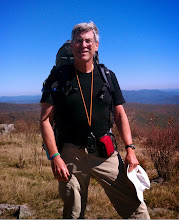As we drove along the road, we suddenly saw Exit Glacier a few miles away and took a couple of shots, zooming in for the second one:


Welcome to Kenai Fjords National Park, our first of three new national parks for us this trip!

The trail is about a mile long, and you don't see a lot of the glacier, until suddenly, there it is:

Exit Glacier has melted several miles back in the last 150 years. There are signs every so often marking the point that it reached in that year. Even in my lifetime, it has receded about a half mile, not to mention the lateral distance lost. Pretty sobering, whether you believe in global warming or not. By the way, most Alaskans I talked with definitely believe that the climate is warming sharply - keep in mind that Alaska is a very conservative state. But they are living with the evidence.

This was an interesting glacier high on a nearby (relatively speaking) mountain:










Wow that is really cool. What a wonderful place to visit.
ReplyDeleteI think the doubt about global warming is not so much that its not getting warmer but the reasons for it. The temperature has always been changing and it always will. Just saying.
First time I've ever been near a glacier! pretty neat. Yep, glaciers themselves and their remnants including the Great Lakes and fjords are proof that the climate is always changing. It just seems to be changing at a greatly accelerated pace right now, decades instead of centuries or millenium.
ReplyDelete